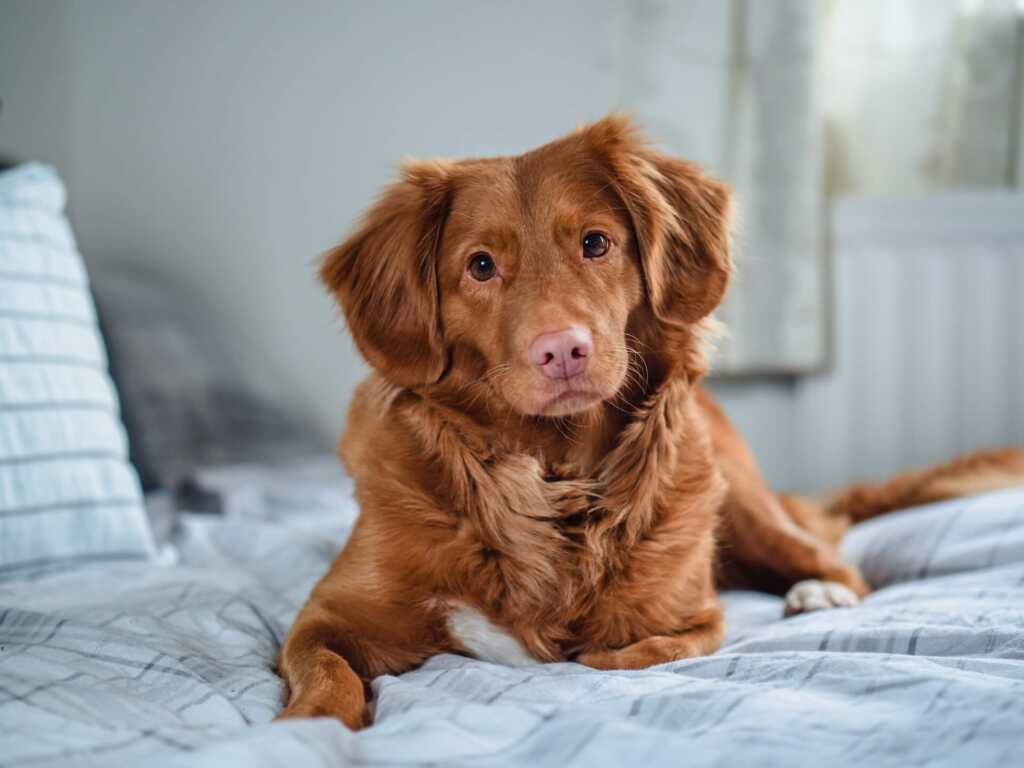Prompting joyful wagging tails and warm cuddles, our canine friends are undeniably an integral part of our lives. They are family, companions who bring boundless joy, and comfort. Given the love and loyalty they shower upon us, it’s our responsibility to ensure they feel comfortable and at ease in their home environment. This guide will provide you with practical tips and insights on how to create a cozy and safe space for your furry friend, ensuring that your house indeed feels like ‘home’ for them.

Comfortable Bedding
A fundamental step towards securing your dog’s comfort is providing appropriate bedding. Specifically for larger breeds, you need a large dog bed that is spacious enough to allow them to stretch out completely without any of their limbs hanging off the edge. The bed should be made of durable and comfortable materials to support their weight and provide a gentle cushion for their joints.
Place the bed in a quiet, draft-free corner of the house so that your pet can have a peaceful and uninterrupted rest. Keep in mind that some dogs may have specific preferences for the type of bedding they like, such as memory foam or raised beds.
Temperature Control
Just like humans, dogs are sensitive to changes in temperature and can feel uncomfortable if it gets too hot or cold. During colder months, provide your pup with warm blankets and ensure that their bed is not placed near any drafts.
In the summer, make sure your house is well-ventilated to prevent overheating. If you have air conditioning, set it to a comfortable temperature for your dog. You can also freeze some treats in ice cubes for them to cool down during hot days.
Regular Grooming
Of course, we all love our dogs no matter how they look, but regular grooming is essential for their comfort and well-being. Brushing your dog’s coat keeps them looking clean and distributes natural oils that keep their skin healthy.
Trimming their nails regularly will prevent discomfort when walking or running, and cleaning their ears and teeth will avoid any potential infections or irritations. Even keeping their fur at a manageable length will prevent mats and tangles that can be uncomfortable for them.
Noise Control
Dogs have an acute sense of hearing, making them particularly sensitive to loud noises. Excessive or abrupt sounds can lead to anxiety and stress in our canine companions. The solution? Use soundproofing materials if you live in a noisy neighborhood or near a busy street.
Another effective approach is to use white noise machines or calming music designed specifically for dogs. These can mask intrusive sounds and create a soothing auditory environment. Always try to minimize the use of loud appliances around your dog, and remember to provide them with a safe, quiet retreat during events known for their noise like thunderstorms or fireworks.
Playtime and Exercise
Every dog needs regular exercise to maintain their physical and mental well-being. Lack of activity can lead to boredom, restlessness, and even behavioral problems. Take your dog for daily walks or play games that involve running, jumping, and chasing.
You might also want to consider creating an indoor obstacle course or investing in puzzle toys that keep your dog engaged and stimulated. When you provide them with enough physical activity, you’re strengthening the bond between you and your furry friend.
Nutritious Food
Don’t forget to provide your dog with nutritious food that suits their breed, age, and size will keep them healthy and satisfied. Consult with your veterinarian to determine the right type and amount of food for your dog.
Make sure to also provide them with plenty of fresh water throughout the day to stay hydrated. And, of course, always keep an eye on their food and water bowls to ensure they are clean and free of any contaminants.
Positive Reinforcement
Positive reinforcement is a cornerstone of effective dog training and contributes significantly to a comfortable home environment. This involves rewarding your dog for good behavior and encouraging the replication of such actions.
Rewards can range from tasty treats, a favorite toy, verbal praise, or loving belly rubs. When your dog associates good behavior with positive experiences, they are more likely to behave well. If they happen to behave inappropriately, avoid using punishment or physical force. Instead, use redirection and positive reinforcement to guide them towards the right behavior.

Creating a comfortable home for your dog is a delightful blend of love, attention, and understanding of their unique needs. From cozy bedding and suitable temperature control to regular grooming and proper nutrition, every facet plays a critical role. And, let’s not forget the power of positive reinforcement in building a happy and comfortable environment. Let’s utilize these strategies, ensure our canine companions feel loved and comfortable, and continue to enjoy the unconditional love and joy they bring into our lives.





